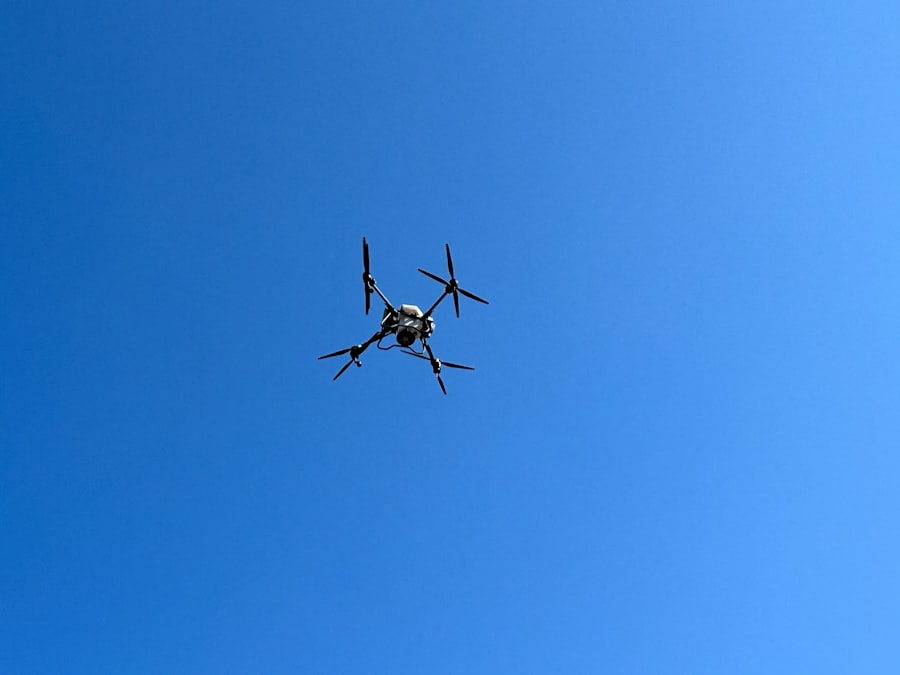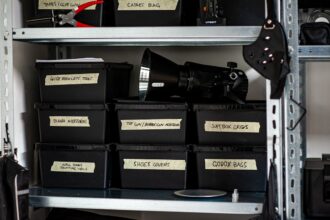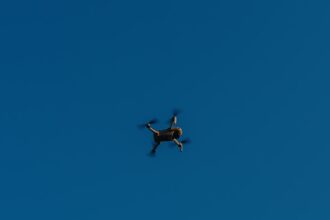In recent years, the proliferation of drones has sparked a significant response from various sectors, leading to the rapid development of anti-drone technology. As drones have become more accessible and affordable, their use has expanded beyond recreational purposes to include commercial applications, surveillance, and even military operations. This surge in drone usage has raised concerns about privacy, security, and safety, prompting governments, businesses, and individuals to seek effective countermeasures.
The rise of anti-drone technology is a direct response to these challenges, aiming to mitigate the risks associated with unauthorized drone activities. The emergence of anti-drone systems reflects a growing recognition of the potential threats posed by drones. Incidents involving drones interfering with airport operations, invading private property, or being used for malicious purposes have underscored the need for robust countermeasures.
As a result, a variety of anti-drone technologies have been developed, ranging from jamming devices to advanced detection systems. This evolution signifies not only a technological arms race but also a broader societal effort to balance the benefits of drone technology with the imperative of ensuring safety and security.
Key Takeaways
- Anti-drone technology has seen a significant rise due to the increasing threat of unauthorized drones in various industries and public spaces.
- Understanding the potential threats posed by drones is crucial for developing effective anti-drone technology and strategies.
- The effectiveness of anti-drone technology is constantly being evaluated and improved to stay ahead of evolving drone capabilities.
- Key components of anti-drone systems include detection, tracking, identification, and mitigation technologies to counter unauthorized drone activity.
- Real-world testing of anti-drone technology is essential to ensure its reliability and performance in different scenarios and environments.
Understanding the Threat of Drones
Drones present a multifaceted threat landscape that encompasses various domains, including public safety, national security, and privacy concerns. Their ability to operate at low altitudes and access restricted areas makes them particularly challenging to monitor and control. For instance, drones have been implicated in incidents where they disrupted air traffic at major airports, posing significant risks to passenger safety.
Additionally, the potential for drones to be weaponized or used for surveillance raises alarms among law enforcement and military agencies alike. Moreover, the accessibility of drone technology has democratized its use, allowing individuals with malicious intent to exploit these devices for nefarious purposes. The threat is not limited to high-profile targets; even private citizens can find themselves vulnerable to unwanted surveillance or harassment from rogue drone operators.
This evolving threat landscape necessitates a comprehensive understanding of the capabilities and limitations of drones, as well as the motivations behind their misuse. As such, stakeholders must remain vigilant in assessing the risks associated with drone technology while developing effective countermeasures.
Evaluating the Effectiveness of Anti-Drone Technology

The effectiveness of anti-drone technology is a critical consideration for organizations and governments seeking to protect their assets and ensure public safety. Various anti-drone systems have been deployed in different contexts, each with its own strengths and weaknesses. For instance, some systems focus on detection capabilities, utilizing radar and radio frequency sensors to identify unauthorized drones in real-time.
Others employ jamming techniques to disrupt the communication between a drone and its operator, effectively neutralizing the threat. However, evaluating the effectiveness of these technologies is not straightforward. Factors such as environmental conditions, the sophistication of the drone being targeted, and the specific operational context can all influence outcomes.
Moreover, as drone technology continues to evolve, so too must anti-drone systems adapt to counter new tactics employed by malicious operators. Continuous testing and refinement are essential to ensure that these technologies remain effective in an ever-changing landscape.
Key Components of Anti-Drone Systems
| Component | Description |
|---|---|
| Radar Systems | Detect and track drones in the airspace. |
| Jammers | Disrupt the communication between the drone and its operator. |
| Acoustic Sensors | Identify drones based on their sound signatures. |
| Camera Systems | Visual detection and tracking of drones. |
| Drone Capture Nets | Physically capture drones in mid-air. |
Anti-drone systems typically consist of several key components that work together to detect, track, and neutralize unauthorized drones. Detection is often the first line of defense; advanced radar systems and electro-optical sensors are commonly employed to identify drones in the vicinity. These detection systems can provide real-time data on drone location and altitude, enabling operators to assess potential threats quickly.
Once a drone is detected, tracking becomes crucial. Many anti-drone systems utilize sophisticated algorithms to predict a drone’s flight path and determine its intended target. This tracking capability allows operators to make informed decisions about how to respond effectively.
Finally, neutralization methods vary widely and can include jamming signals, deploying nets to capture drones physically, or even using directed energy weapons in more advanced systems. The integration of these components is essential for creating a comprehensive anti-drone solution that can address various threats.
Testing Anti-Drone Technology in Real-World Scenarios
Testing anti-drone technology in real-world scenarios is vital for assessing its effectiveness and reliability. Controlled environments can provide valuable insights into how these systems perform under ideal conditions; however, real-world applications often present unique challenges that must be addressed. For instance, testing in urban environments may involve navigating complex landscapes filled with buildings and other obstacles that can interfere with detection and tracking capabilities.
Moreover, real-world testing allows developers to gather data on how anti-drone systems respond to different types of drones and operational tactics. This information is crucial for refining existing technologies and developing new solutions that can better address emerging threats. Collaboration with law enforcement agencies and military organizations can facilitate more comprehensive testing scenarios that simulate potential security incidents involving unauthorized drones.
The Role of Regulations in Anti-Drone Technology

Regulations play a pivotal role in shaping the development and deployment of anti-drone technology. As drones become more prevalent in various sectors, governments worldwide are grappling with how to regulate their use while ensuring public safety. This regulatory landscape influences how anti-drone systems are designed and implemented, as compliance with legal standards is essential for their acceptance and effectiveness.
In many jurisdictions, laws governing drone usage are evolving rapidly in response to emerging threats. Regulations may dictate where drones can operate, how they must be registered, and what safety measures must be in place for commercial operators. These legal frameworks not only guide the development of anti-drone technologies but also establish clear guidelines for their deployment by law enforcement agencies and private entities.
As regulations continue to evolve, stakeholders must remain informed about changes that could impact their operations and strategies for countering unauthorized drone activities.
Challenges and Limitations of Anti-Drone Systems
Despite advancements in anti-drone technology, several challenges and limitations persist that hinder their widespread effectiveness. One significant challenge is the rapid pace of innovation within the drone industry itself. As manufacturers develop more sophisticated drones equipped with advanced features such as artificial intelligence and autonomous flight capabilities, anti-drone systems must continuously adapt to keep pace with these advancements.
Additionally, ethical considerations surrounding privacy rights pose challenges for the deployment of anti-drone technologies. The use of jamming devices or other countermeasures may inadvertently interfere with legitimate drone operations or infringe upon individuals’ rights to privacy. Striking a balance between security needs and civil liberties remains a complex issue that requires careful consideration by policymakers and technology developers alike.
Advancements in Anti-Drone Technology
The field of anti-drone technology is witnessing rapid advancements driven by ongoing research and development efforts. Innovations such as artificial intelligence and machine learning are being integrated into detection systems to enhance their accuracy and responsiveness. These technologies enable systems to differentiate between authorized and unauthorized drones more effectively, reducing false positives and improving overall efficiency.
Moreover, advancements in materials science are leading to the development of lightweight yet durable nets designed for capturing rogue drones safely. These nets can be deployed from ground-based systems or even from other aerial vehicles, providing a non-destructive means of neutralizing threats without causing collateral damage. As research continues to push the boundaries of what is possible in anti-drone technology, stakeholders can expect even more sophisticated solutions to emerge in the coming years.
Integration of Anti-Drone Technology in Different Industries
The integration of anti-drone technology spans various industries as organizations recognize the need to protect their assets from unauthorized drone activities. In sectors such as aviation, airports are increasingly adopting anti-drone systems to safeguard against potential disruptions caused by rogue drones operating near flight paths.
Similarly, critical infrastructure facilities such as power plants and government buildings are implementing anti-drone measures to prevent unauthorized surveillance or potential attacks. The commercial sector is also exploring anti-drone solutions as businesses seek to protect their intellectual property from aerial espionage or harassment by competitors using drones for surveillance purposes. This cross-industry integration highlights the growing recognition of drone-related threats and the need for comprehensive countermeasures across diverse sectors.
Future Trends in Anti-Drone Technology
Looking ahead, several trends are likely to shape the future landscape of anti-drone technology. One prominent trend is the increasing reliance on automation and artificial intelligence in detection and neutralization systems. As these technologies become more sophisticated, they will enable faster response times and improved accuracy in identifying potential threats.
Additionally, collaboration between public and private sectors will likely intensify as organizations seek comprehensive solutions to address drone-related challenges. Partnerships between technology developers, law enforcement agencies, and regulatory bodies can facilitate knowledge sharing and innovation while ensuring that solutions align with legal frameworks. Furthermore, as public awareness of drone-related issues grows, there may be increased demand for transparency regarding how anti-drone technologies are deployed and monitored.
Stakeholders will need to navigate this evolving landscape carefully while balancing security needs with ethical considerations surrounding privacy rights.
The Ongoing Battle Against Unauthorized Drones
The rise of unauthorized drone activities has prompted an urgent response from various sectors through the development of anti-drone technology. As stakeholders grapple with understanding the multifaceted threats posed by drones, they must also evaluate the effectiveness of existing countermeasures while addressing challenges related to regulation and ethical considerations. Advancements in technology continue to drive innovation within this field, leading to more sophisticated solutions capable of addressing emerging threats effectively.
However, as the landscape evolves rapidly, ongoing collaboration between industries will be essential for developing comprehensive strategies that ensure public safety while respecting individual rights. Ultimately, the battle against unauthorized drones is ongoing; it requires vigilance from all stakeholders involved—governments, businesses, law enforcement agencies—and a commitment to adapting strategies as new challenges arise in this dynamic environment.
In recent years, the development and deployment of anti-drone technology have become crucial in addressing the growing threat posed by unmanned aerial vehicles. These technologies are designed to detect, track, and neutralize drones that may be used for malicious purposes. An article that delves into the effectiveness of these technologies can be found on the In The War Room website. For more insights, you can read the related article by visiting In The War Room. This resource provides a comprehensive analysis of the current advancements and challenges in the field of anti-drone technology.
FAQs
What is anti-drone technology?
Anti-drone technology refers to a range of systems and devices designed to detect, track, and neutralize unauthorized drones flying in restricted airspace. These technologies are used to protect sensitive areas such as airports, government buildings, and public events from potential security threats posed by drones.
How does anti-drone technology work?
Anti-drone technology works by using a combination of sensors, radar, and radio frequency (RF) technology to detect and track drones in the airspace. Once a drone is detected, the technology can employ various methods to neutralize the threat, such as jamming the drone’s control signals, disrupting its GPS navigation, or physically capturing the drone with a net or other means.
What are the limitations of anti-drone technology?
While anti-drone technology has advanced significantly in recent years, it still has limitations. Some of these limitations include the ability of certain drones to operate autonomously without relying on GPS or radio signals, the potential for false alarms or interference with legitimate drone operations, and the challenge of effectively neutralizing drones in urban or complex environments.
What are the factors that affect the effectiveness of anti-drone technology?
The effectiveness of anti-drone technology can be influenced by various factors, including the type and capabilities of the drones being targeted, the environmental conditions in which the technology is deployed, the range and accuracy of the detection and neutralization methods, and the regulatory and legal considerations surrounding the use of anti-drone technology in different jurisdictions.
What are some examples of anti-drone technology in use today?
There are several examples of anti-drone technology currently in use, including radar systems that can detect and track drones, RF jamming devices that can disrupt drone control signals, drone detection and neutralization systems that use cameras and AI algorithms, and physical countermeasures such as drone-catching nets and drone-dropping drones. These technologies are employed by various organizations and authorities to protect critical infrastructure and public safety.




